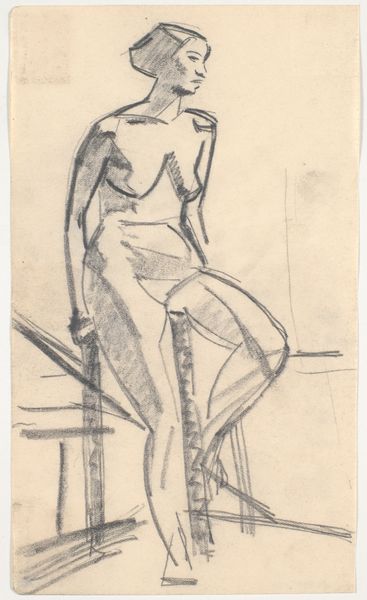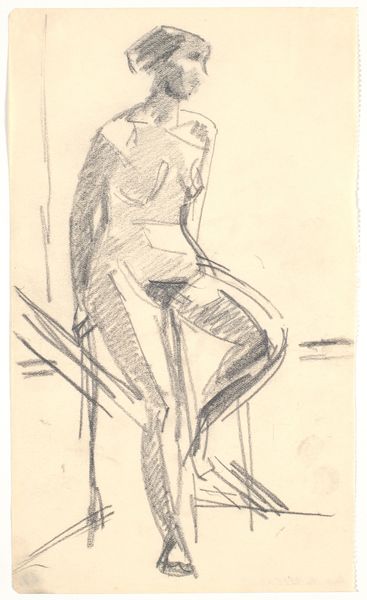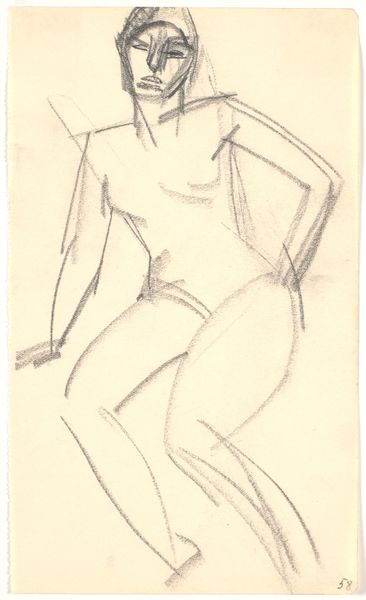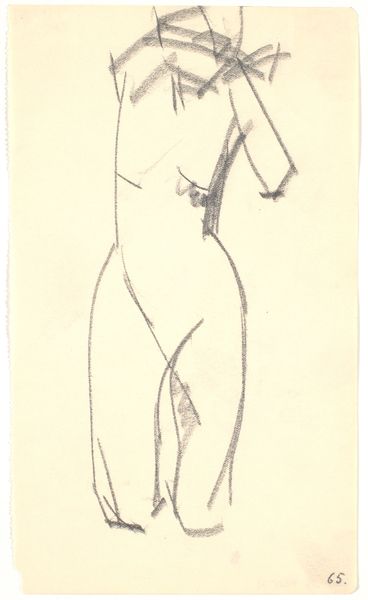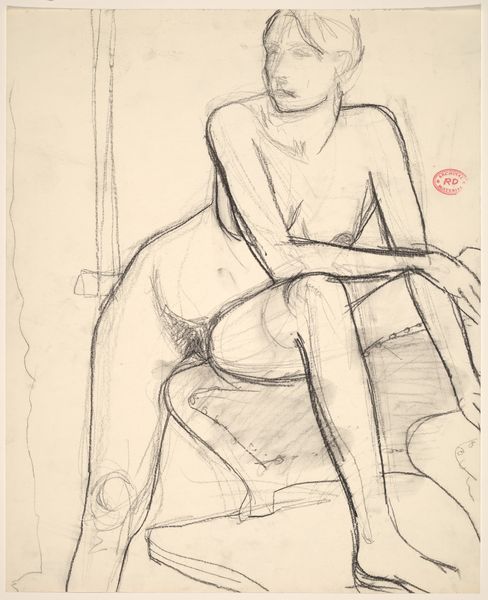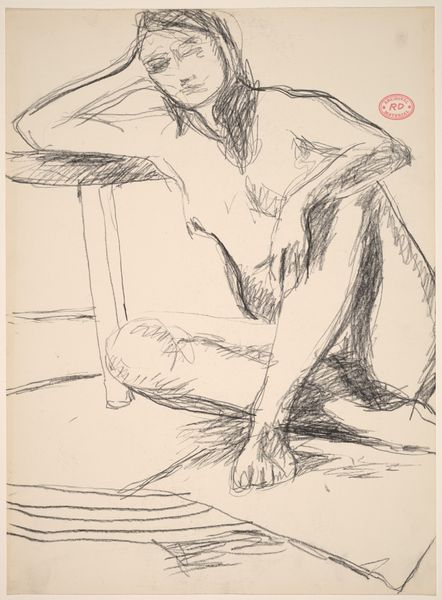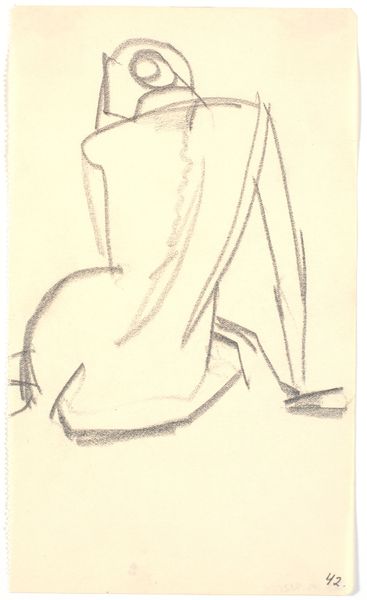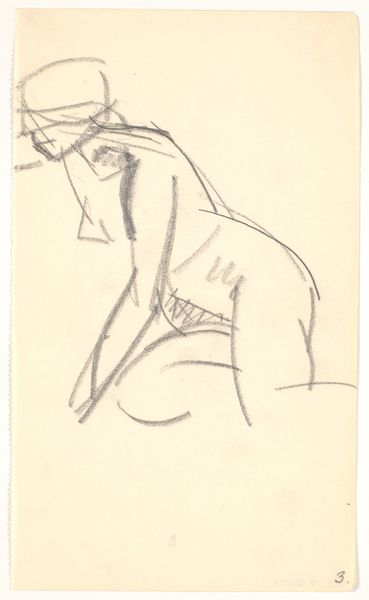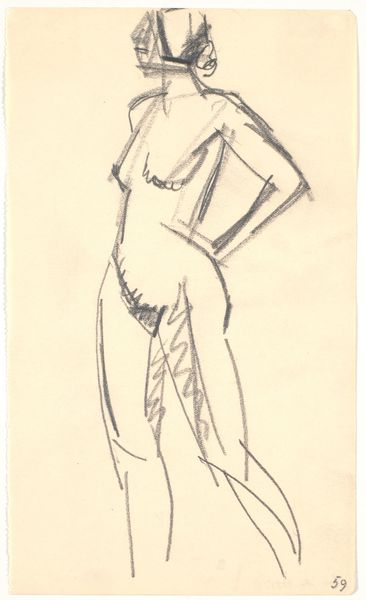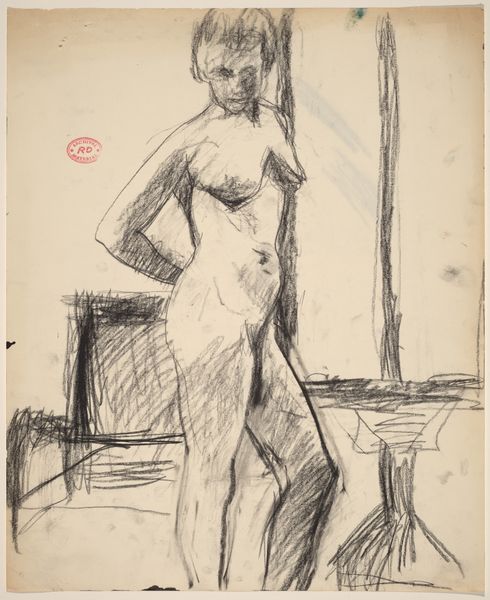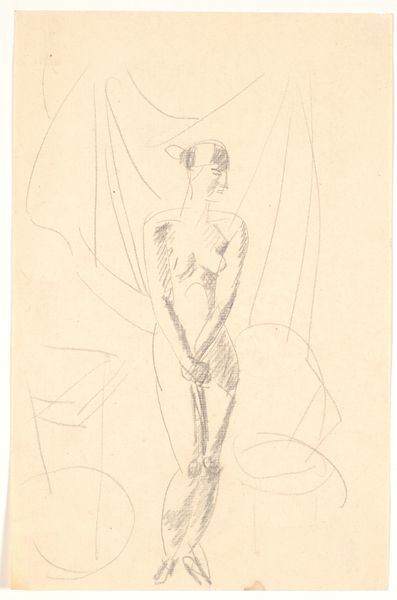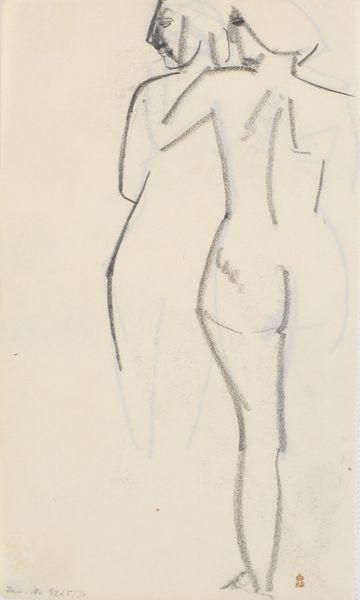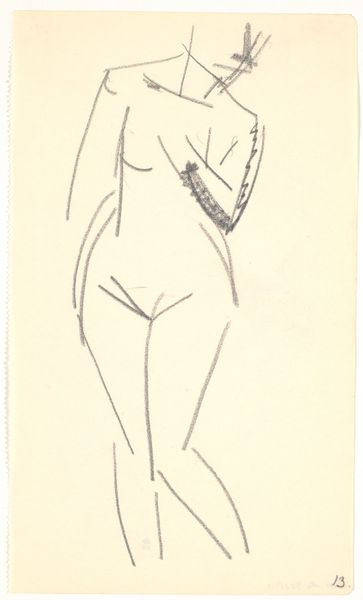
drawing, pencil
#
drawing
#
pencil
#
nude
Dimensions: 209 mm (height) x 124 mm (width) (bladmaal)
Editor: Here we have Karl Isakson's "Siddende model," created between 1914 and 1915. It’s a pencil drawing of a nude figure seated on what appears to be a stool. I'm immediately struck by the raw, almost fragmented quality of the lines. What symbols or ideas do you think Isakson is trying to convey here? Curator: That fragmentation is key, isn’t it? Consider the early 20th century - a time of immense societal upheaval and reevaluation. The nude, historically a symbol of classical beauty and idealized form, is rendered here in these broken lines, challenging those established notions. Editor: So you're suggesting the form itself represents a break from tradition? Curator: Precisely. But more than that, what does the gaze of the figure suggest to you? Is she confronting the viewer? Or lost in thought? Editor: She seems introspective, almost melancholy. Isakson isn’t just depicting a body; he’s suggesting an internal psychological space, perhaps one of discomfort or uncertainty in a rapidly changing world. Curator: Absolutely. Notice the lack of a defined background. That absence intensifies the feeling of isolation, doesn’t it? What does the stool, as a symbol of support, reveal in its very starkness and simplicity? Is it reliable, or flimsy? Editor: It almost appears precarious, like the figure might fall at any moment. This whole piece feels like a statement on the fragility of the human condition. I hadn't thought of it that way initially. Curator: Art invites us to find continuity between then and now. It’s about recognising those echoes of cultural memory. What do we remember about that time and what still lives today? Editor: It makes me wonder what symbols and artistic choices today will echo in the future. Thank you, this has completely shifted my perspective on this drawing.
Comments
No comments
Be the first to comment and join the conversation on the ultimate creative platform.
